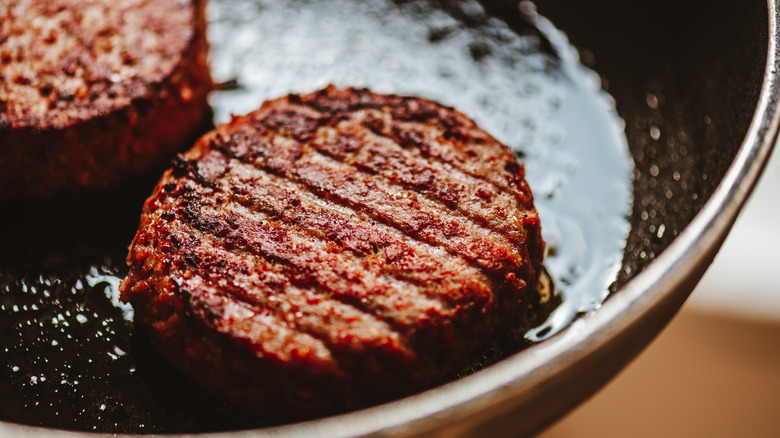The Fatty Difference Between Ground Beef And Hamburger Meat
A synonym is a word (or a phrase) that means the same thing as another word (or phrase). For example, one synonym of "open" is "unlocked." Another is "ajar." In the world of grammar, synonyms are often interchangeable, but in the world of food, words tend to be more specific, especially when it comes to the U.S. Department of Agriculture. For instance, ground beef and hamburger meat are not the same.
The USDA has a very specific criterion that separates ground beef from hamburger meat. That criterion involves fat content. While ground beef and hamburger may both contain up to 30% fat, where that fat comes from is what makes the difference. For ground beef, the fat must be a component of the meat trimmings. However, with hamburger meat, the fat can come from other sources. The takeaway from this seemingly subtle distinction is ground beef is a higher-quality option.
What are meat trimmings?
Some people have a peculiar misconception about ground beef. They mistakenly believe that it can contain unwanted parts of the animal, such as organs and ears, that are tossed together and ground up. This is not true. While seasonings are allowed, food labeled "ground beef" must be 100% ground beef.
When cattle are butchered, the meat is first removed in large chunks called primal cuts, which include chuck, rib, sirloin, round, and more. The meat that is left behind, the parts clinging to the bones, is called the trimmings. As is, this meat is not suitable to be sold on its own, so it is ground up to make ground beef. This means if a processor wants ground beef that is 30% fat, the meat trimmings must contain 30% fat. If those trimmings only contain 20% fat and other beef fat is added to get it to 30%, that is hamburger meat, not ground beef.

